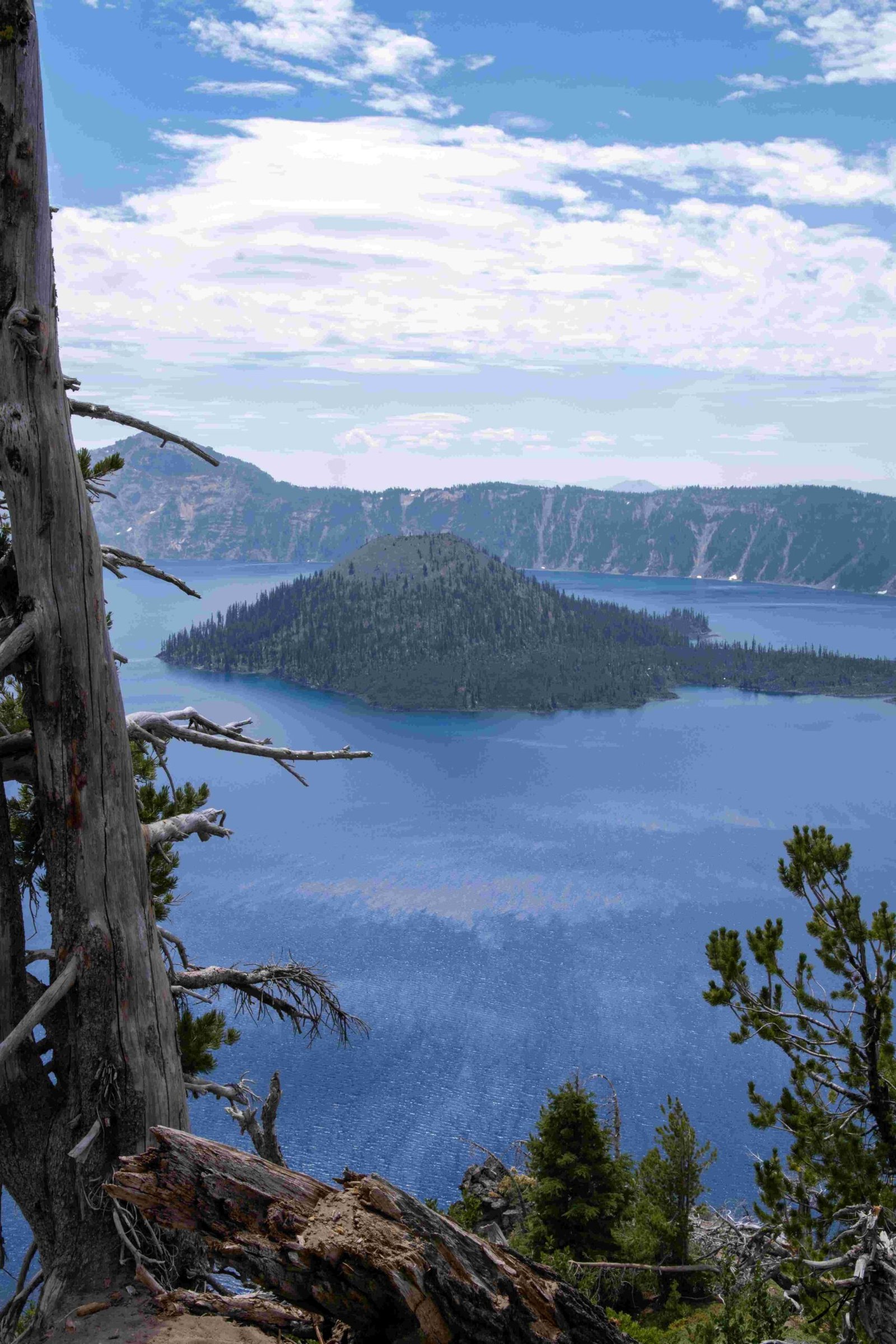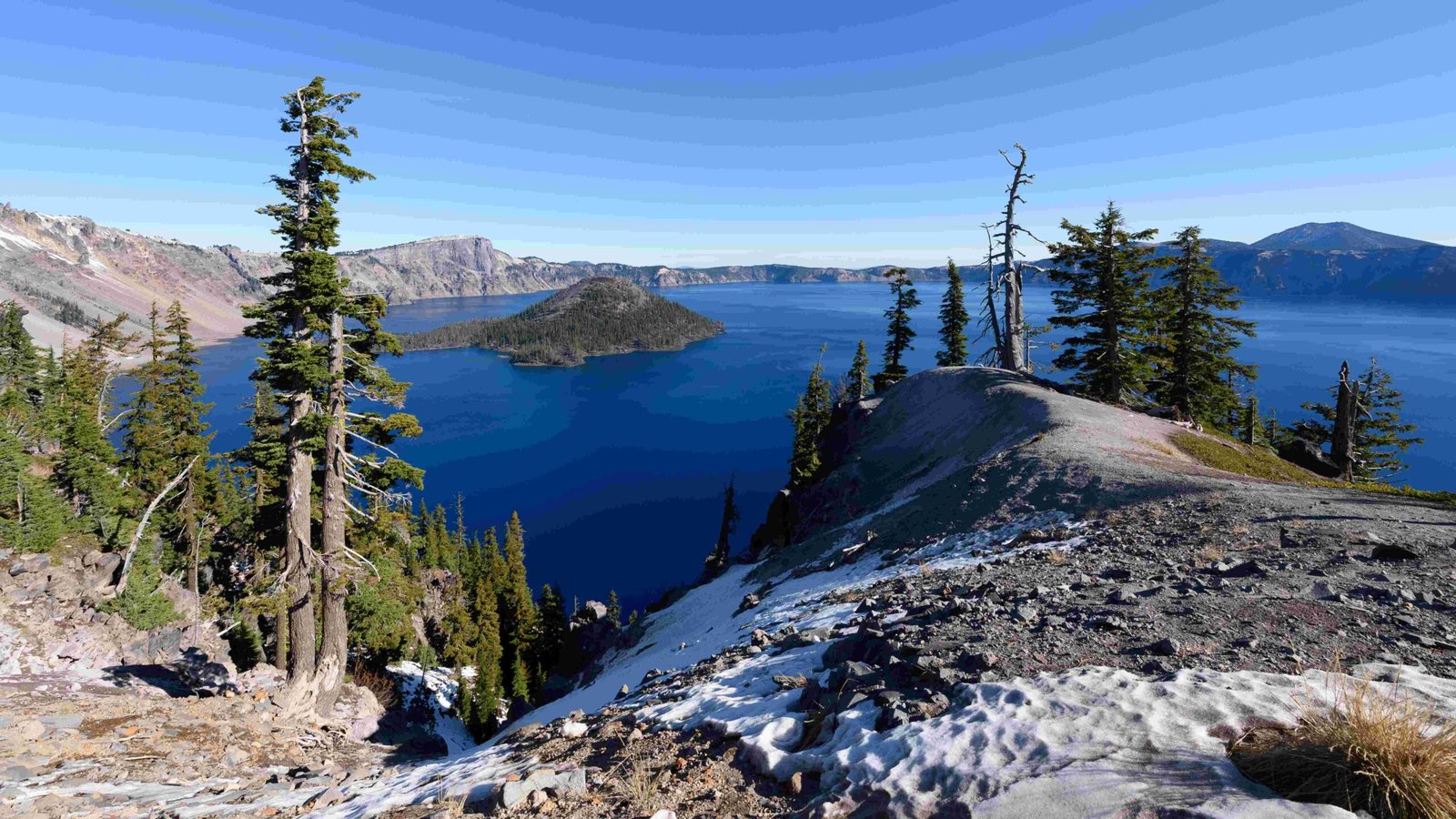Crater Lake, formed by the collapse of Mount Mazama about 7,700 years ago, is not currently an active volcano. While it has a significant volcanic history, including a massive eruption that led to its formation, Crater Lake is now considered dormant. The absence of recent seismic activity, volcanic gas emissions, or other signs of volcanic processes indicates its current inactive state. However, geologists classify it as dormant rather than extinct, suggesting the potential for future activity in the distant future.
What is the Current Volcanic Status of Crater Lake?

Crater Lake’s current volcanic status is inactive. Here’s a breakdown of the key indicators:
- Seismic Activity: No recent significant seismic events reported
- Volcanic Gas Emissions: Absence of detectable emissions
- Geological Surveys: No active volcanic processes observed
This lack of volcanic activity suggests that Crater Lake is not currently posing any volcanic threats.
How Was Crater Lake Formed?

The formation of Crater Lake is a testament to its volcanic past:
- Date: Approximately 7,700 years ago
- Event: Collapse of Mount Mazama following a massive eruption
- Eruption Scale: Volcanic Explosivity Index (VEI) of 7
This cataclysmic event reshaped the landscape, creating the caldera that would eventually become Crater Lake.
What is the Volcanic History of Crater Lake?
Crater Lake’s volcanic history is marked by significant events:
| Time Period | Event |
|---|---|
| 5680 BCE ± 150 years | Major eruption forming Crater Lake |
| Pre-Crater Lake | Multiple eruptions of Mount Mazama |
| Post-formation | Minor eruptions within the caldera |
The eruption that formed Crater Lake was the most impactful, but the area has a long history of volcanic activity.
Why is Crater Lake Considered Dormant?
Crater Lake’s classification as a dormant volcano is based on several factors:
- Past Activity: Clear evidence of significant volcanic events
- Current State: No ongoing volcanic processes
- Future Potential: Possibility of eruptions in the distant future
- Geological Time Scale: Relatively recent activity in geological terms
This dormant status places Crater Lake in a category between active volcanoes and those considered extinct.
What Are the Unique Geological Features of Crater Lake?
Crater Lake boasts several distinctive geological features:
- Caldera Size: Approximately 8 x 10 km
- Lake Depth: Maximum depth of 594 meters (1,949 feet)
- Wizard Island: A cinder cone formed by post-caldera eruptions
- Phantom Ship: A rock formation resembling a small ship
- Llao Rock: A massive lava flow on the caldera rim
These features showcase the diverse volcanic processes that have shaped Crater Lake over time.
How Does Crater Lake Compare to Other Dormant Volcanoes?
Crater Lake shares similarities with other dormant volcanoes but also has unique characteristics:
- Formation: Caldera lake, unlike many cone-shaped dormant volcanoes
- Size: One of the deepest lakes in the world
- Water Clarity: Exceptionally clear due to lack of inlets and filtration
- Monitoring: Less intensive than active volcanoes but still observed
While dormant like many other volcanoes, Crater Lake’s caldera formation sets it apart in terms of appearance and geological interest.
What Monitoring Systems Are in Place at Crater Lake?
Although Crater Lake is not actively volcanic, various monitoring systems are in place:
- Seismic Sensors: To detect any underground movements
- Water Quality Tests: Regular monitoring of lake water composition
- Geological Surveys: Periodic assessments of the caldera and surrounding area
- Temperature Measurements: Of both the lake and any potential hot spots
These systems help scientists track any changes that might indicate a shift in Crater Lake’s volcanic status.
How Might Climate Change Affect Crater Lake’s Volcanic Potential?
While climate change doesn’t directly influence volcanic activity, it could have indirect effects on Crater Lake:
- Water Level Changes: Potentially affecting pressure on the caldera floor
- Increased Precipitation: Could lead to more frequent landslides
- Temperature Fluctuations: Might impact the lake’s unique ecosystem
Scientists continue to study these potential impacts to better understand Crater Lake’s long-term stability.
What Would Be the Signs of Renewed Volcanic Activity at Crater Lake?
If Crater Lake were to show signs of renewed volcanic activity, they might include:
- Increased seismic activity
- Changes in water temperature or chemistry
- Ground deformation around the caldera
- Emergence of new fumaroles or hot springs
- Unusual gas emissions from the lake or surrounding area
However, it’s important to note that there are currently no indications of such activity.
How Does Crater Lake’s Dormant Status Affect Tourism and Research?
Crater Lake’s dormant status has significant implications:
- Tourism:
- Safe for visitors year-round
- Attracts geology enthusiasts and nature lovers
-
Allows for various recreational activities
-
Research:
- Provides a stable environment for long-term studies
- Offers insights into post-volcanic ecosystem development
- Serves as a model for understanding caldera formation and evolution
The lake’s current state allows for a balance between scientific study and public enjoyment, making it a valuable natural laboratory and tourist destination.
References:
1. https://volcano.si.edu/volcano.cfm?vn=322160
2. https://www.nps.gov/crla/index.htm
3. https://www.nps.gov/crla/learn/nature/geology.htm

